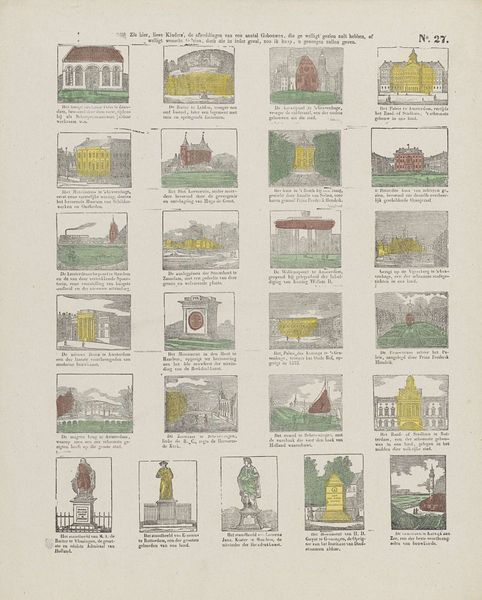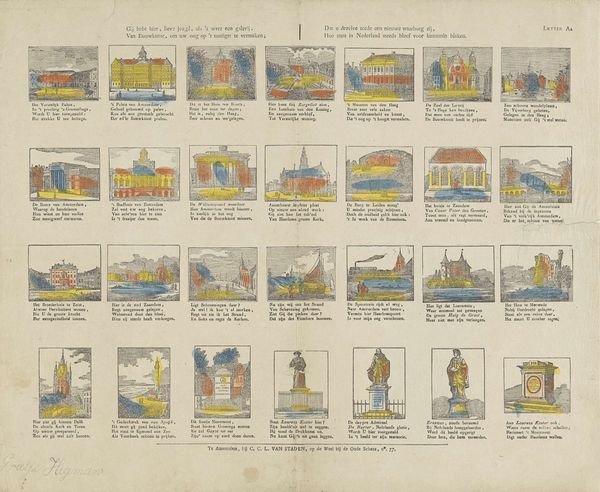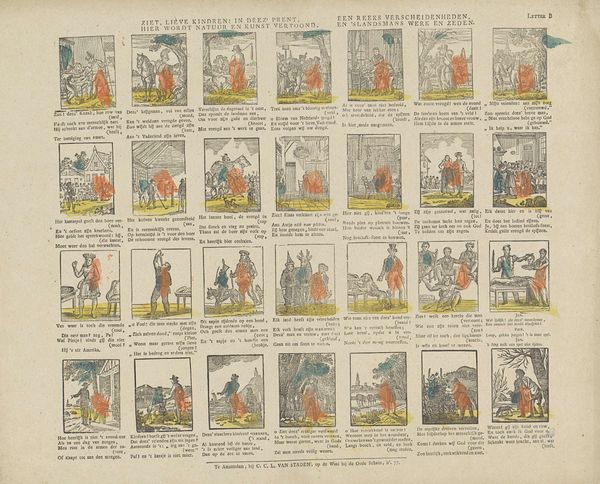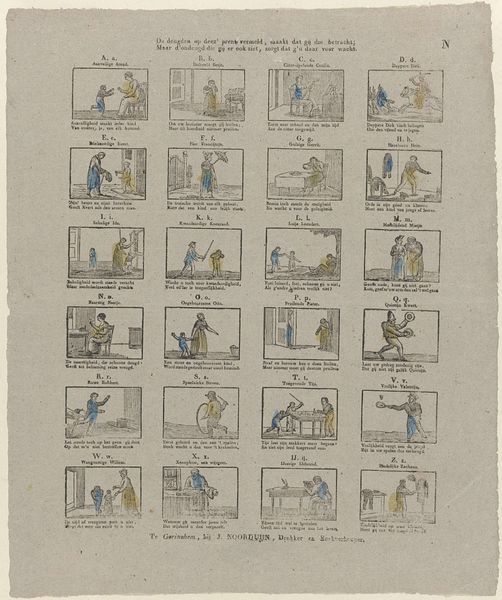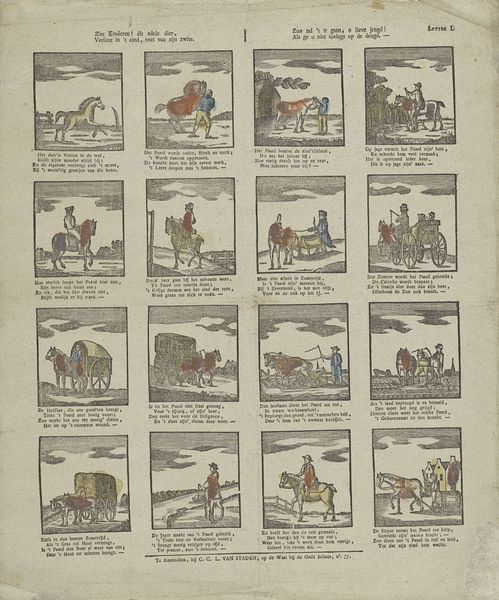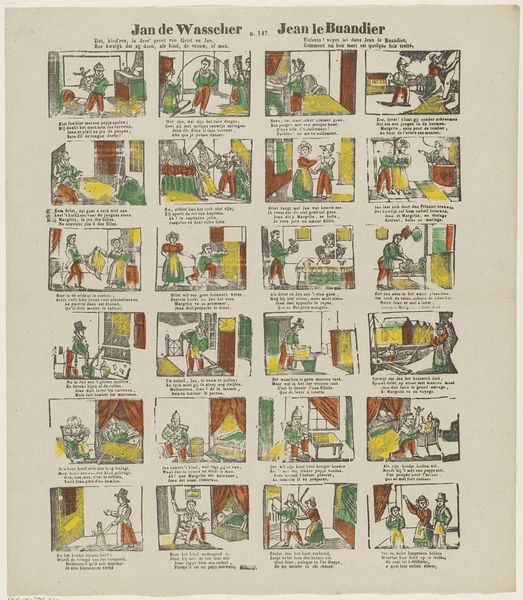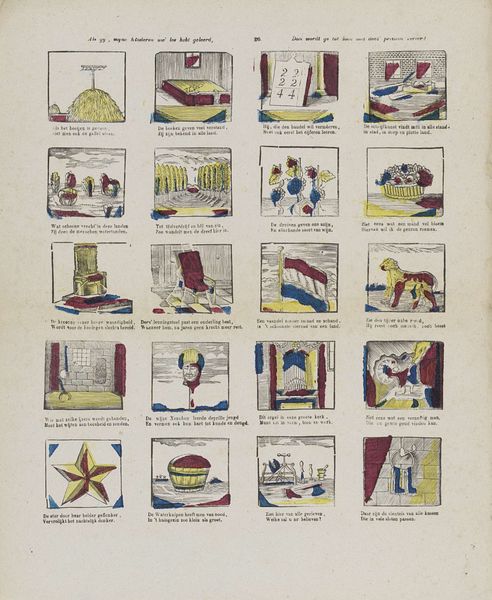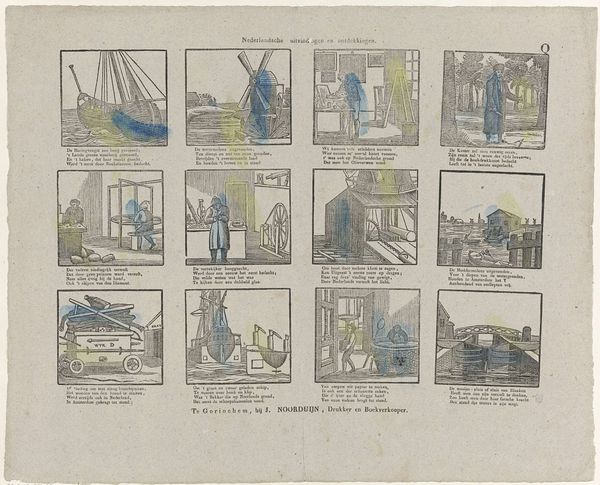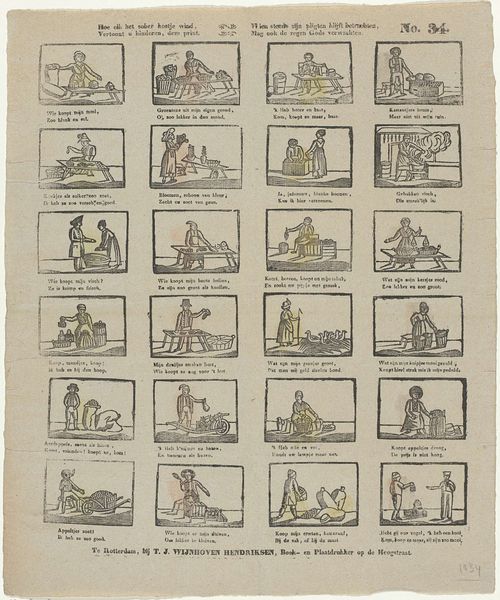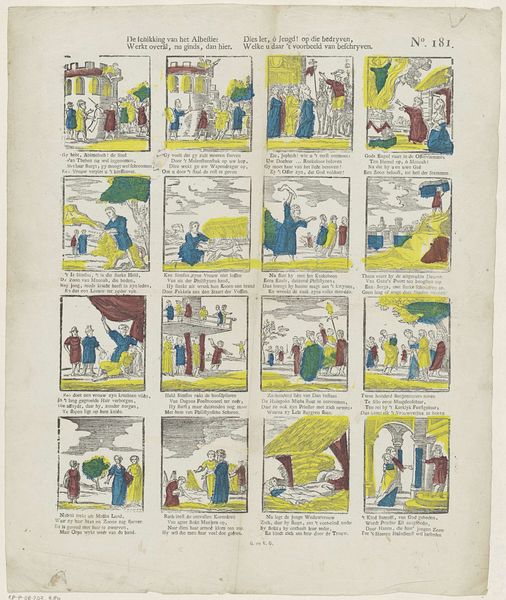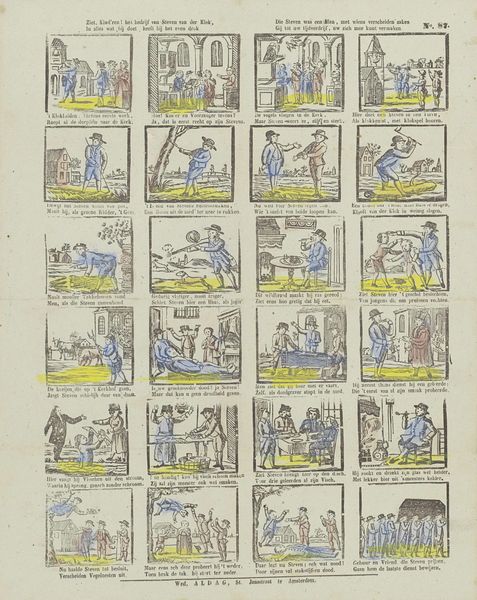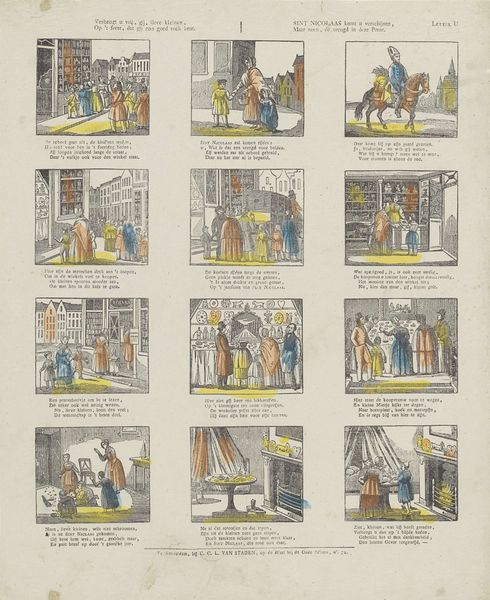
Zie hier, lieve Kinders, de afbeeldingen van een aantal gebouwen, die ge welligt gezien zult hebben, of / welligt wenscht te zien, doch die in ieder geval, zoo ik hoop, u genoegen zullen geven 1850 - 1870
0:00
0:00
drawing, graphic-art, print, paper
#
drawing
#
graphic-art
# print
#
paper
#
cityscape
Dimensions: height 400 mm, width 327 mm
Copyright: Rijks Museum: Open Domain
This illustrated sheet was made by Willem Bal in the 19th century, using lithography, a printmaking process that democratized image production. The materiality of lithography lends this sheet its particular character. Unlike engravings, lithographs are created using a greasy crayon on a flat stone. The artist draws directly onto the surface, and then the stone is chemically treated so that ink adheres only to the drawn areas. This process allows for a more fluid and painterly line than traditional printmaking, though this example is relatively linear. Lithography was a relatively new technology in Bal's time, a product of the industrial revolution that made image reproduction much faster and cheaper. Prints like this one could be mass-produced and widely distributed, contributing to a growing culture of visual information. The multiple stages involved in lithography meant a division of labor, with some workers preparing the stones, others drawing, and still others operating the printing presses. By understanding the materials and processes behind this image, we can appreciate its historical significance, and how it reflects broader social and technological changes.
Comments
No comments
Be the first to comment and join the conversation on the ultimate creative platform.
